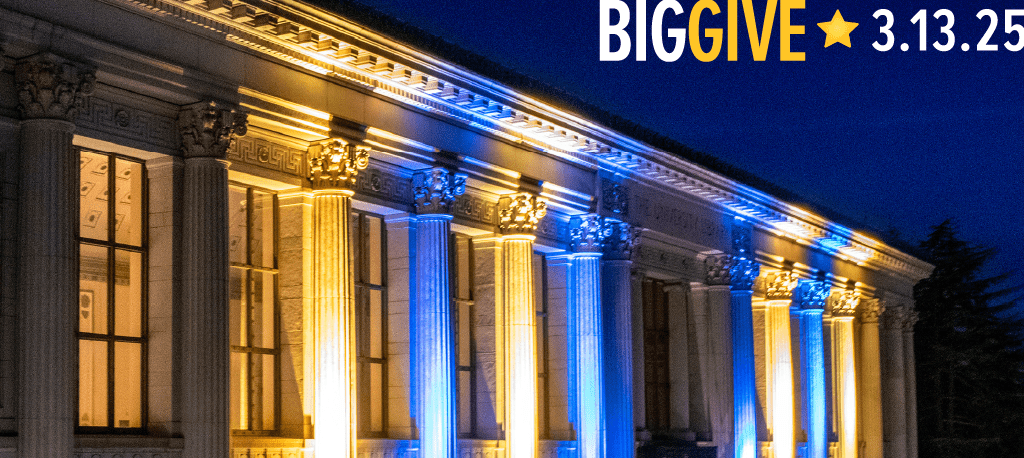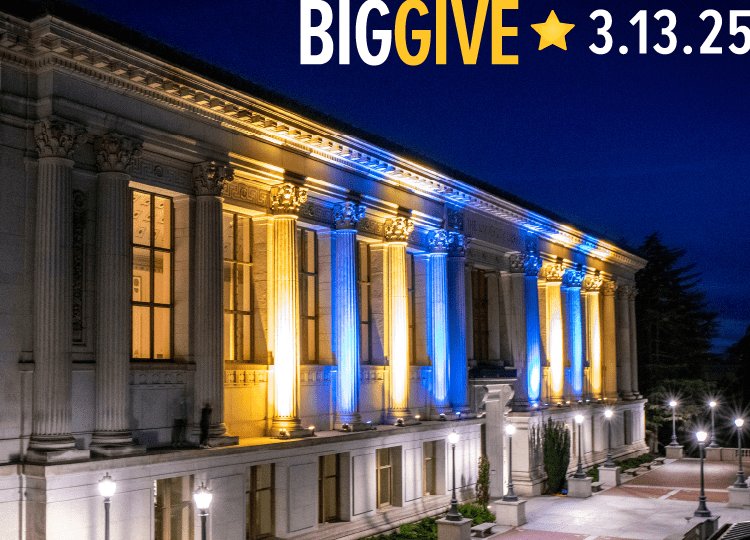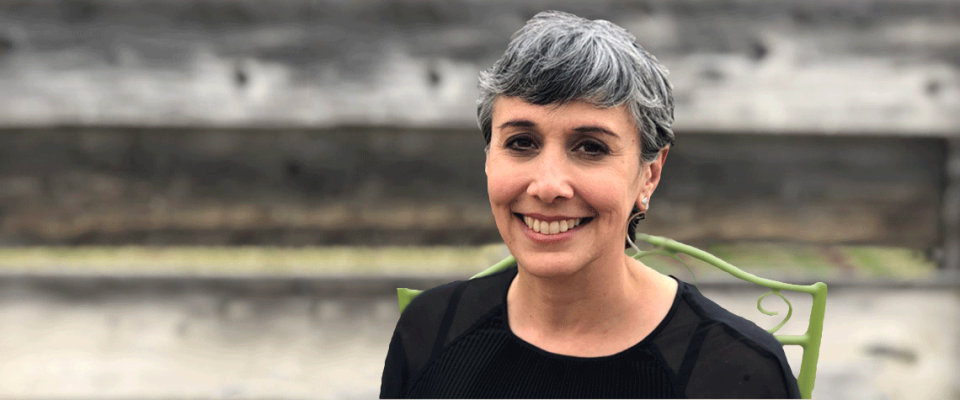From Bollywood rap to Bangalore tech to Vishnu beer labels, California remixes Indian culture.
It’s two days before I leave for India and I am shopping frantically in downtown San Francisco.
My niece is 17 and I assume she needs something trendy to wear, something to give her “my-uncle-lives-in-America” cachet among her friends in Calcutta. I roam the aisles of the voguish H&M department store picking out one little outfit after the other. I check the label of a nifty pink cotton number. Made in India. I pick up the next one—pistachio green with some elegant embroidery. Made in India. Made in India. Made in Bangladesh. Made in India. Made in Pakistan. I put them all back on the rack, trying to imagine my mother’s face if she were to discover I had flown 28 hours from halfway across the world bearing gifts made in Pakistan.
India has come to America in a way I had never imagined. The credits of the newest Spike Lee film Inside Man thump with the beats of the Bollywood blockbuster song “Chhaiya Chhaiya.” At the Rickshaw Stop club in San Francisco, hundreds of revelers of all shades crowd the dance floor for frenzied Non-Stop Bhangra. When Sudipto Chatterjee teaches a course on Indian films at Berkeley, most of his students are not South Asian. And here’s the clincher—according to the glossy Indian Life & Style magazine, Indian American twins Veena and Neena, specialists in belly dancing with boa constrictors, proud owners of the “Indi-hop” dance trademark, once regarded as “too foreign” by casting agents, are storming Hollywood, from Ozzy Osbourne’s 50th birthday bash to Brad and Jen’s wedding. Yes, that former it couple’s wedding.
A couple of years ago Newsweek anointed South Asians “the new American masala.” This year it discovered “the new India.” Five hundred years after Christopher Columbus thought he had discovered Indians, we are truly found.
“India’s hot,” says Renda Dabit. She should know, because for the past few years the Palestinian American event planner and one-time Henna salon owner in Berkeley has been putting on ever more lavish Bollywood theme parties for her clients in the Bay Area. Dabit’s company Henna Garden organizes pirate parties, Hawaiian luaus, and Vegas soirees. “Moroccan themes were very big before 9/11,” she says with a wry smile. “But Bollywood is something new, and it’s cool, hip, and fun.”
“Cool, hip, and fun” are not words I am used to hearing about the country I come from. Hot, dusty, smelly. Colorful, exotic, spicy. But cool, hip, and fun? What happens to the price of migration when everything you had to leave behind suddenly shows up around you in a new hypercool avatar—remixed and recycled with a sitar backbeat?
Immigration once meant cooking with substitutes, imagining the taste of a long-lost vegetable while nibbling its nearest (but still somewhat distant) American cousin. No longer.
When my parents left India for England in the ’50s, before I was born, they went by ship. The entire clan came to see them off, for no one knew when they would make the long journey back. The Suez Canal had just reopened and the ship meandered through the Red Sea, past the smoking volcano of Etna, across the choppy Bay of Biscay and the English Channel. Seasick, homesick, heartsick, my mother landed in cold, gray London, leaving all the flavors of home behind her, but not her memories.
Some days when the Polish landlady was out and couldn’t complain about the smell, my mother would try to cook dishes that reminded her of warmer days in Calcutta, dishes like greens with fish head curry. Too embarrassed to admit she ate fish heads and bones, she’d pretend to own a cat. “Wrap the heads and bones up in some newspaper for the cat,” she would tell the English fishmonger. I imagine my mother coming home, past delicate English flowers like snowdrops and primrose, clutching her package of smelly lies wrapped in newsprint. Migration was the fish bone stuck in their throats.
Now, that melancholy has left migration in a gust of globalization. This new interest in India is beyond “the bleeding heart interest in poverty and the orientalism of Taj Mahal, sitar, and Kamasutra,” says Sudipto Chatterjee, who teaches performance studies at Berkeley. He sees this as America acknowledging not just that there is a world outside but that “the world outside is populating our world inside in places like California.”
It’s a two-way street. Indian markets are opening up to international brand names—the real Levis and Coca-Cola instead of their knock-off cousins—Lavis and Campa Cola. And the best of India washes up in the malls of America, its music hammered into rap songs, its mirrored bindis sewn into dresses. I can walk into the sprawling fluorescent warehouse of India Cash & Carry in Sunnyvale and pick out paanch phoran spice and Ayurvedic digestive pills. I can get all the fish heads my diasporan heart desires.
When Bharati Mukherjee came to America in the 1960s, no one had seen saris on Main Street. “Even in Manhattan we’d smile at another Indian if they walked by us,” remembers Mukherjee, an author and professor in the English department at Berkeley. “You felt an affinity to other Indians that you might not have felt in India.”
It’s a feeling echoed by Pulitzer Prize-winning author Jhumpa Lahiri. In an interview soon after the publication of her first novel, The Namesake, she said that her mother would be sauntering along Cambridge’s Harvard Square with her in a stroller “and every time she would see someone who looked Bengali there was this instant: ‘Who are you? Where are you from? Let’s be friends.’ ” She says that even after years in America her parents never seemed to feel quite safe, except in the company of those friends. In the suburban Rhode Island town where she grew up, none of her friends’ parents locked their doors. “My parents were always locking the door, locking the garage, closing the windows, locking the windows every night,” says Lahiri. “I think it’s just a sense of not feeling on firm ground.”
That Indians are feeling on firmer ground in America is indisputable. It’s hard not to when the U.S. president is trying to push a special India-U.S. nuclear deal through Congress instead of engaging in the usual finger-wagging about non-proliferation. Some of this new confidence undoubtedly stems from the numbers. In 1990, Indians were 0.33 percent of the U.S. population. In 2000, they were 0.6 percent of the population, with the highest average growth rate of all Asian subgroups. According to Merrill Lynch, almost 200,000 of them are millionaires.
“During the twenty years I’ve been in California, an immigrant fog of South Asians has crept into America,” Bharati Mukherjee writes in the voice of her heroine Tara in her latest novel, The Tree Bride. When some 21st-century Fitzgerald writes the chronicle of Silicon Valley, it might well be called The Great Gupta, she says.
But it’s not just the numbers that account for this new confidence. “These are the children of the immigrants from the ’60s and ’70s coming of age,” says Chatterjee at Berkeley. “They don’t have the divided loyalties of their parents. They are born American.” It means they are freer to experiment with their culture and to embed it into their American lives. They are hungry to see themselves onscreen and onstage, he says.
When Chatterjee staged Indian playwright Manjula Padmanabhan’s play Harvest on the Berkeley campus, he was astounded. “They were sold-out performances and people were jumping up and down with joy,” Chatterjee says. “They were saying it’s about time.”
This shifts the very notion of multiculturalism. “The old melting pot versus rejection of American culture rhetoric doesn’t work anymore,” says Bharati Mukherjee. She sees the new Indian Americans at home both in San Francisco and in the “McMansions of the Dollar Colony in Bangalore.” They self-confidently take what they want from each culture. There’s no need to erase one identity to be the other. “They are ready to max SAT scores and go to Harvard and MIT,” she says. “But they are also the guardians of (classical dance traditions) Kathak and Kathakali.”
But it’s not Kathak or Kathakali that greased India’s entry into the American mainstream. That ticket might just have been the all-you-can-eat Indian lunch buffet.
When I first came to the United States at the end of the ’80s, I brought with me a tattered diary with simple recipes handwritten by my mother (“how to boil rice,” “basic chicken curry,” “dal”). My cooking experiments produced mixed results, but the only other Indianish option in my small university town in the Midwest was an unhappy yellow glop labeled “curry chicken” at the local cheap Chinese takeout.
Everything changed in the ’90s with the arrival of an army of young men on H-1B visas working in the booming high-tech firms of Silicon Valley. With so many single men thousands of miles from home, all missing mom’s cooking, it was not surprising that the Valley was soon dotted with Indian restaurants. “We grew up in communities of taste,” says Krishnendu Ray, author of The Migrant’s Table. “As a migrant, your loss is all the more acute because you are amidst all this plenty here. That nostalgia expresses itself through food.”
Over the past decade, every other strip mall lining El Camino Real, as it cut north and south through Silicon Valley, sprouted at least one Indian buffet. In San Francisco, the shabby Tenderloin, once better known for drug addicts and drunks, is now redolent with the smells of tandoori as a cluster of Indian-Pakistani restaurants has sprung up doors from each other.
The first on the block, Shalimar, really started as a no-nonsense, down-to-earth joint where taxi drivers could grab a quick meal. Shalimar still dresses down like its neighborhood. The staff hollers out orders. Men in turmeric-stained aprons pat dough into naans. Huge boxes of garlic and tubs of fat onions are piled up on the shelves next to fiery clay ovens and blackened pans filled with rice. Dirty plates pile up. The napkin dispenser is empty. But no one, not even the yuppies in black, seems to mind.
The dot-com bubble that brought tides of young men to California eventually burst. The ebb tide of outsourcing has since carried many of those young men and the jobs they once performed in America back to India. But while they were here, they changed the face of India (and the palates of their co-workers). Many of the high-tech worker bees might be gone, but the taste of India has remained.
The danger, though, is that America is experiencing just a taste for India and not for Indians. This disconnect between Indo-chic and Indian lives can be striking. On one hand there is the unprecedented success of films like Monsoon Wedding and Dabit’s Bollywood theme parties where buff young men wearing sparkling bindis serve Perrier water. On the other hand there are the South Asians who found themselves attacked at little convenience stores and gas stations after 9/11.
“This is not just post-9/11,” says Veena Dubal, a J.D./Ph.D. student at Berkeley who has researched hate crimes. “South Asians have always been regarded as the prototypical other. During the first Gulf War there was a rise in hate violence against South Asians.”
In just one week after 9/11 there were 645 reported incidents of bias or violence against South Asians and Arab Americans. On September 15, 2001, Balbir Singh Sodhi, a Sikh immigrant in Mesa, Arizona was planting flowers in front of his gas station in memory of those killed on 9/11. As he was kneeling down, Frank Roque, an American aircraft mechanic, shot him. Roque told friends he wanted “to go out and shoot some towel heads.”
Dubal’s best friend, also a Sikh who wore a turban, was beaten up in Berkeley itself. “He was called Osama, body slammed, and had his nose broken and no one helped,” says Dubal.
That wave of violence seems to have crested, but the undertow of suspicion is hard to shake. In Spike Lee’s Inside Man, when the Sikh hostage in the bank heist emerges dazed into the street, the policeman shouts, “He’s an Arab.” (When he replies, “I’m a Sikh,” you can just hear that post-9/11 weariness in his voice.) A South Asian family in Pennsylvania trying to cook biryani suddenly found FBI agents in moon suits rifling through their spice cabinets. A neighbor had called the authorities because their cooking pots were “suspiciously” large.
Then there’s outsourcing—a dirty word in American politics. When Ro Khanna ran for public office in San Mateo in 2004, a local weekly immediately pronounced him “pro-outsourcing” just because he was Indian American. And now comes the latest stereotype—selling Sudafed while South Asian. Police in northwest Georgia wrapped up a sting operation into methamphetamine production in 2005 when agents wandered into convenience stores to buy cold medicines, cooking fuel, and matchbooks, things that could be used to make meth. The problem, says the ACLU, was that South Asian stores were 100 times more likely to be targeted than white-owned stores in the area. Forty-nine people were arrested. Forty-four of them were South Asian. Thirty-three had the same last name—Patel.
It’s hard to tell if all of this is getting the Indian community worked up. “Terrible about those poor Patels,” we seem to be saying as we bop around to the music of Punjabi MC at some hip nightclub. “But have you heard that the Indian American median family income is $61,322 as against the national median family income of $41,994?”
When the controversial immigration bill HR4437 passed the U.S. House of Representatives, hundreds of thousands of Latinos poured out into the streets to protest criminalizing the undocumented. South Asian organizations such as SAALT (South Asian American Leaders of Tomorrow) issued press statements, but Dubal says she didn’t see too many South Asian faces in the rallies she went to. “We fail to feel solidarity with working people of this country or other immigrant communities,” she says.
It seems we are just too busy being the model minority—keeping our heads down, writing software, winning spelling bees, and buying responsible cars like Toyotas and Hondas. In fact, so many of us have Honda Accords (mine is a silver four-door sedan that just blends into any supermarket parking lot in Sunnyvale), my friends nickname them Hindu Accords.
If the community does get riled up about misrepresentations and stereotypes, more often than not these days it seems to be about religion. This year California has been the scene of an angry, protracted battle over depictions of India and Hinduism in sixth-grade textbooks. The Hindu Education Foundation (HEF) and Vedic Foundation jumped into the controversy, pointing out errors and slights in textbooks. Hindi is not written in Arabic script. Hinduism is not just about the caste system and untouchability. Hindu gods routinely get the “small g” god treatment. “Hinduism is not treated with the same respect as Christianity or Judaism,” Dr. Mihir Meghani, president of the Hindu American Foundation, told the California Board of Education. “Unlike those faiths, the sacred scriptures of Hinduism are referred to as legends or myths.” No wonder, argued a mother in Milpitas, that her child was coming home from school not wanting to be a Hindu.
Most Indian academics in the United States disagreed with the HEF. “The story is more complex than that of a group of parents of a minority community who seek to instill pride in their children,” says Raka Ray, Sarah Kailath Chair of India Studies at Berkeley. For example, she says, when the HEF protests statements such as women having significantly fewer rights than men in ancient India, they are trying to rewrite Indian history with some mythical Golden Age of women in ancient India. It might be an understandable reaction, says Ray, in an age when the United States occupies countries such as Afghanistan in the name of its poor, oppressed women. But she says, “We cannot replace one false history with another.” Either way, one thing the tempest in a textbook with packed hearings and lawsuits has proved is that when it wants to, the community can definitely flex some serious muscle.
American corporations are learning that the hard way. They have been having a tough time remembering that Hindu gods are gods, even the ones with an elephant’s head. They belong to temples, not on beer bottle labels and Sittin’ Pretty toilet seats. The American Hindus Against Defamation are starting to look like a many-armed Hindu God themselves as they fight everyone from CafePress.com (thongs with Hindu deities) to American Eagle Outfitters (flip flops with Lord Ganesha) to Aerosmith (a cat-headed Lord Krishna on the cover of its Nine Lives album).
The fear is that now that they have discovered India, the nabobs of popular culture will just make it theirs to sell. My grandmother brushed her teeth with a neem twig and put turmeric paste on our cuts. Now multinational companies want to patent that. Indian composer Bappi Lahiri accused Dr. Dre of lifting a snatch of his Bollywood song and plopping it into the mega hit “Addictive.” It’s the multiculturalism of commodities. We might be only one Wal-Mart away from being “cool” to becoming “exotica on someone’s lunchbox.”
This pick-and-choose, mix-and-match chai-latte multiculturalism means Indian culture could easily become a parody of itself, says Sandeep Sood, one of the creators of the popular weekly South Asian comic strip, “Badmash.” “We could be peddling power yoga with one mehndi-filled hand while using the other to hold up our dhoti … selling enlightenment free with a pack of $2 bindis,” quips Sood. “Don’t do it.”
But for now Indians and Americans are enjoying this new Karma Cola season of Cool. On a sunny Sunday morning, a young woman in athletic gear leads a class of 5- to 8-year-olds through hip shakes as the boom box blares out the latest pulsating Bollywood hit at the Indian Community Center in Milpitas. The Bollywood dance classes are packed and the parents seem relieved they have discovered something Indian their kids actually enjoy. My cousins in New Jersey want to be on the college Bhangra team. Of course my niece in India wants nothing more than to go to Pizza Hut in Calcutta (pepperoni “with 100 percent imported pork pepperoni”). “There are probably more Bharatanatyam arangetrams (debut dance performances) in California than the (dance’s native home state) Tamilnadu nowadays,” chuckles Berkeley’s Sudipto Chatterjee.
Cricket clubs, Sikh temples, hip-hop Bhangra (“Music+Movies+Spirit+Sweat”), South Indian masala dosas, popcorn and samosas at the Bollywood multiplex in Fremont, and Congressman Bobby Jindal—the face of Indian America has come a long, long way from eating monkey brains in Indiana Jones and the Temple of Doom.
But there’s still one problem. What on earth do I take back for my niece in India?
Sandip Roy is an editor with New America Media and host of its radio show about ethnic communities, UpFront, on KALW-FM 91.7 in San Francisco. He is a commentator for National Public Radio’s Morning Edition and a regular contributor to the San Francisco Chronicle, the San Jose Mercury News, India Currents, and other newspapers. His writing also has appeared in several anthologies. Reagan Louie is an internationally acclaimed photographer based in the Bay Area. His photographs have been widely exhibited at museums such as the San Francisco Museum of Modern Art, the National Museum of Modern Art in Seoul, South Korea, and the Museum of Modern Art in New York. Louie’s monographs have received critical praise and he is the recipient of numerous awards, including Guggenheim and Fullbright fellowships. His last photo essay for California magazine, “Chinafornia,” appeared in the January/February 2006 issue.
From the July August 2006 Indo Chic issue of California.






















